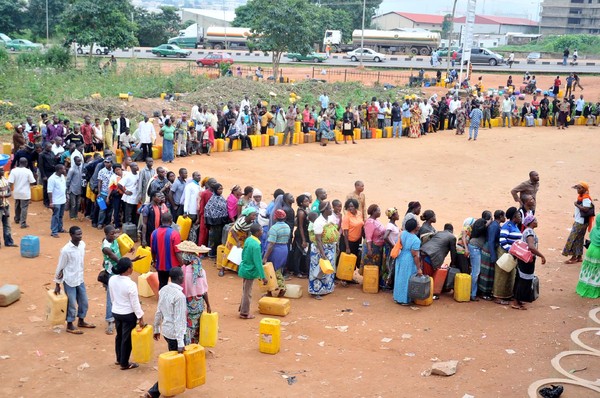Subsidy is often canvassed as one of the ways to redistribute wealth and increase the welfare of the poor. In most nations, there are some economic or physiological necessities that are subsidized through various measures broadly referred to as pro poor policies. Recent experience however confirms the inefficient outcome of many of the subsidy regime. This is the lesson from the kerosene subsidy as it is emerging from several allegations including an un-appropriated N700 million ($4.458Million) daily subsidy payment for kerosene.
Kerosene, technically called (DPK) is a basically used for household chores like cooking through stove. It is commonly used by low income earners and non urban dwellers. Kerosene subsidy is designed to be a way to help make life easy for the people in this class. Emerging facts from the ongoing probe and corruption allegations however have shown that kerosene subsidy like most others has been a failure and it is riddled with corruption. The wastefulness and failure of getting optimal result from various subsidy regimes are common, yet policy makers either for lack of knowledge or to court popularities always ignore the failure of the various subsidy regimes by replacing them with other design.
To put the argument in proper context, kerosene is an imported product. The daily consumption rate is 12 million litres and the landing cost is N152 per litre according to Petroleum Product Pricing and Regulatory Authority (PPPRA). The official price is N50 per litre which means government is subsidizing to the tune of N102 on every litre of kerosene. This subsidy has failed to reflect as the product is being sold at N130 on the average in most filling stations. The fact that this has been going on for years is an indication of the high level conspiracy definitely involving those connected to the top. This is because it is not comprehensible how a product being sold in open will command a higher price than officially allowed and yet it was allowed to go on for years.
The foregoing shows the corruption problem that often comes with subsidized products. What is designed as a pro poor intervention often failed by not getting to the poor thereby doing more harm than good. Subsidy funding helps the rich than it helps the poor. In the government records, the sum expended on subsidy is recorded as pro poor spendings but in real life, the money end up in the pockets of the most affluent since they are the distributors, dealers and officials in charge of allocation.
Subsidy regime in itself is bad, deceptive and harmful to the economy as it distorts the market. Subsidy regime distorts the normal demand and supply forces thereby tampering with the self regulating mechanism of the market system. When product prices are fixed arbitrarily, either through subsidized price regime or other government unsound market fiddling, it is a disincentive for competitive pricing, innovation and stability as the entrepreneurs have no incentive to compete on price or innovation.
In this scenario everybody is a loser, but those that loose most are the poor whom the policy was designed to help. They would continue to buy at unusually high price than the market would have allowed had it been left alone. This clearly shows that the best way to help the poor is by allowing market forces to regulate the prices. Ultimately the prices of the products would gradually reduce through the combined forces of competition and innovation.
The most logical way going forward is that government should cancel all subsidy arrangements. Subsidies are generally controversial and there is no hard evidence that they really help the poor. A wise government should avoid the controversies by eradicating subsidy.
Adedayo Thomas wrote in from Lagos
photo: Premium Times



